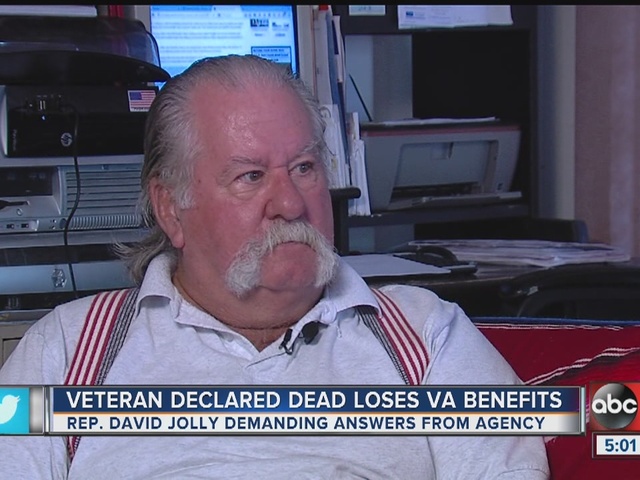According to the famous Schrodinger’s Cat thought experiment, a cat trapped in a poisonous box is simultaneously dead and alive until someone looks inside.
At the Department of Veterans Affairs, however, any military veteran in its sprawling database is both dead and alive until the VA decides to mess with that veteran’s pension.
The latest Schrodinger’s Veteran is Michael Rieker, a Navy vet who was declared dead by the VA despite having a healthy state of mind and sense of humor.
“Was told that my benefits had been suspended because I was deceased,” Rieker said. “I went back and I got a mirror and I fogged the mirror and I said, ‘Well OK, I’m all right.'”
Rieker was accidentally declared dead after a man with the same first and last name but a different initial died in June. A VA employee somewhere in the agency selected the wrong individual and eliminated the still-living Rieker’s veterans benefits.
Rieker is only the latest veteran to get metaphorically murdered by the VA. In mid-October, a veteran suffering from Alzheimer’s disease was prematurely declared dead by the VA in July through a similar administrative mistake. It took several months for the veteran’s daughter, who cares for him full-time, to convince the VA to resurrect her father’s records.
Florida congressman Rep. David Jolly said Rieker was the sixth veteran in 18 months to lose their benefits this way.
“How many veterans have been impacted by a VA that have suggested they’ve died when they’re actually alive?” Jolly said. “What is the financial impact to these individuals? How are the benefits restored? Is it human error? Is it a infrastructure and technology issue? Because when we have those answers, then we can demand a fix.”
But Schrodinger’s Veteran is a two-way street. Just as living veterans are mistaken for the dead, the dead are mistaken for the living.
When whistleblowers revealed that hundreds of thousands of veterans died before receiving any healthcare, it was revealed that the VA can’t distinguish between the living and the dead in its backlog. Thanks to dataloss and disorganization, the agency can’t verify deaths, filter out dead veterans or prioritize living ones, so every veteran waits in the same line regardless of need. One disability claim sat in the VA backlog for 14 years after the veteran who filed it died.
The VA skirted the issue in its public apology for Rieker’s untimely ‘death.’
We sincerely regret the inconvenience caused by such errors and work to restore benefits as quickly as possible after any such error is brought to our attention. VA receives information from multiple sources. Although we believe the erroneous notifications represent a very small number of beneficiaries in comparison to the millions of transactions completed each year in our administration of benefits, to reduce the chance of inaccurate input, procedures are being amended to strengthen verification of the identity of the Veteran or family member when processing “notice of death” transactions.




































